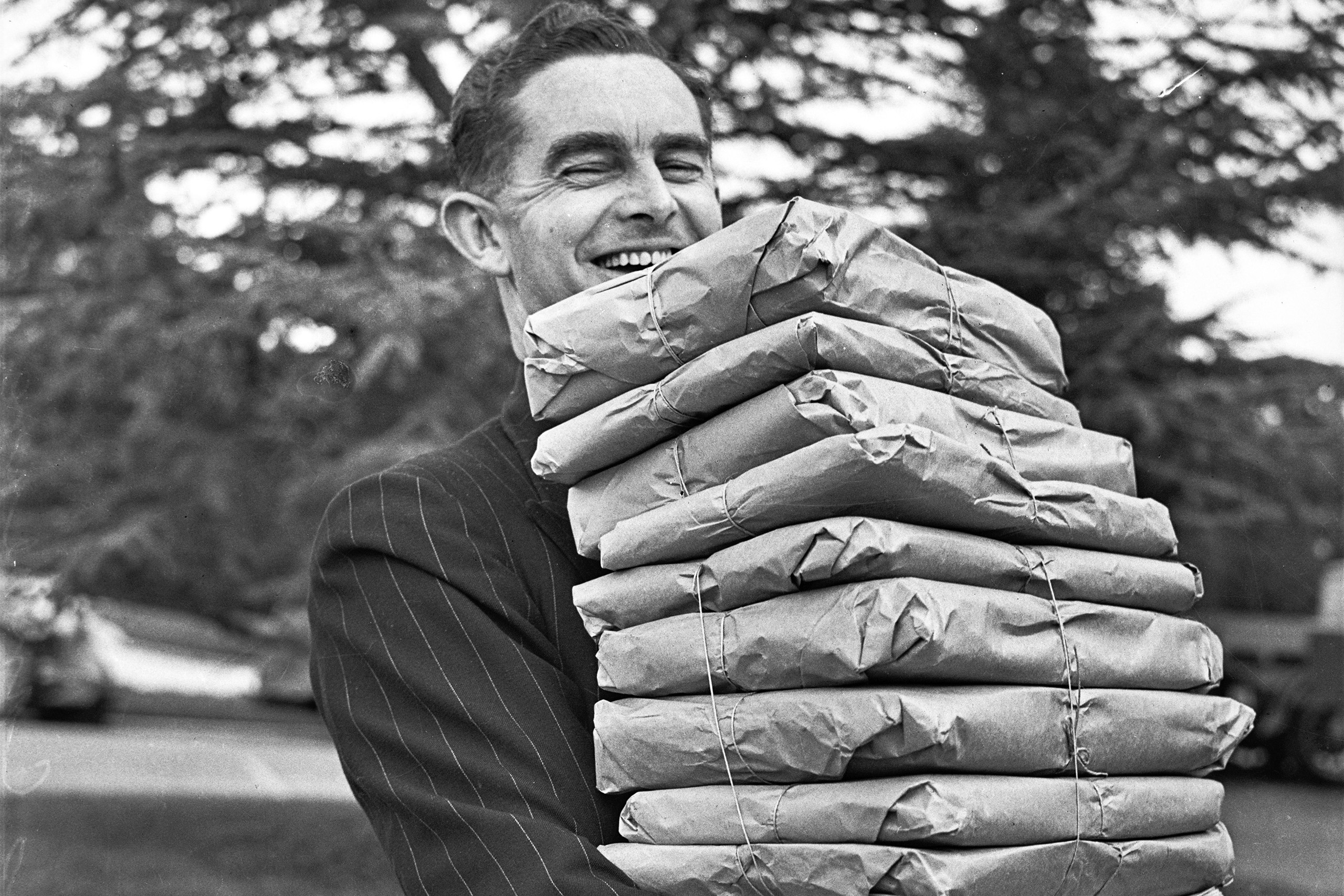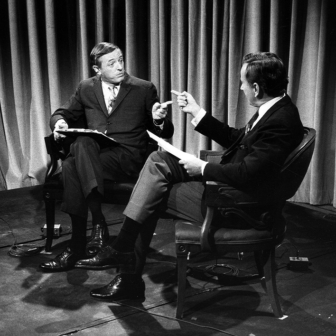Labor’s electoral mastermind Paul Erickson has reached back seventy-five years to find the right historical analogy to describe the implications of Labor’s huge win.
In his campaign review at the National Press Club last Wednesday, Erickson recalled how “overreach” by Ben Chifley’s Labor government in the late 1940s had “let the Liberal Party back in.” The electoral lesson for Anthony Albanese — seated right there in the Press Club audience — could not have been more explicit: stay grounded, stay focused, and deliver the agenda you’ve been elected on; don’t lose sight of the people who put you there.
One of the finest aspects of the Labor Party is its historical memory: the way it understands contemporary challenges through the prism of the past — especially past traumas, of which Labor has had plenty (splits, betrayals, wipeouts, destructive ambition, a dismissal). Chifley’s “overreach” — his 1947 plan to nationalise the private banks and bring retail financial services under full public ownership — provides an important chapter in the party’s Handbook of Historical Lessons.
For Bob Crawshaw, reappraising this epic event in his new book, Battle of the Banks, Chifley’s plan shows “how governments can overestimate the openness Australians have for grand ideas, how bold plans need big efforts to communicate them, and that wealthy and threatened institutions always find ways to rally for survival.”
Indeed. Labor must have felt confident — with the successful management of the war behind it, and an economically literate prime minister in charge; with a majority in both houses of parliament and no election due for two years — that it could put in place what Chifley regarded as a critical plank of postwar reconstruction.
The Labor movement, trade unions and (ahem) the Communist Party were exuberant that the party of the workers was at last acting on its platform commitment to state intervention and punishing the banks for their credit-starving, profit-maximising prolongation of the Great Depression.
But the banks responded furiously, unleashing a mass mobilisation of their employees, swamping parliament with petitions, fighting a legal case all the way to the Privy Council, launching a huge advertising campaign and, eagerly supported every step of the way by Bob Menzies’s Liberal opposition, carrying the message right up to the ballot boxes in the 1949 federal election.
Labor failed to listen, ignored the warning signs, stayed the course and went down in a screaming heap; the Liberals held government for the next twenty-three years; the private banks continued their profitable dominance of the Australian economy.
Crawshaw’s account leaves little doubt that Chifley and his attorney-general Bert Evatt must take most of the blame. How else to explain Chifley’s terse, one-sentence press release announcing that cabinet had authorised him and Evatt to prepare legislation “for the nationalisation of banking, other than State banks, with proper protection for shareholders, depositors, borrowers and staff of private banks.”
The announcement landed without warning and without further elaboration. There was no public inquiry, no industry liaison, no departmental advice, no media briefing, no opinion polling and no draft legislation. Critical parts of the plan — how and in what order nationalisation would take place, for example, and how the “proper protection” would actually protect people — were entirely absent.
For comparable shock value, think Scott Morrison’s unilateral unveiling of AUKUS. For comparable overreach, think John Howard’s determination to push Work Choices through the House and Senate. And just as Howard overlooked the trade union movement, so Chifley had not counted on the wrath, or the organising ability, of the banks.
Crawshaw’s account takes the reader back to an era when those impressive Victorian piles lining Martin Place and Collins Street — now repurposed as restaurants and clothing outlets — actually contained banks. Their architectural splendour embodied the banks’ institutional solidity, financial depth and social respectability.
Ten private banks were slated for nationalisation in Chifley’s scheme. In Sydney, the Bank of New South Wales and the Commercial Banking Company, and in Melbourne the National Bank and Commercial Bank of Australia, were the four largest. Four smaller banks operated in Adelaide, Brisbane and Ballarat. Three more were controlled from London: the English Scottish and Australian (ES&A) bank and the Union Bank, which was just then swallowing the Bank of Australasia. Banks owned by state governments, including the State Savings Bank (Victoria) and Rural Bank (New South Wales), were of course beyond the Commonwealth’s grasp.
Together the private banks operated 2500 branches, managed £650 million in savings on behalf of 1.5 million customers, paid dividends to 70,000 shareholders and employed 20,000 people, predominantly male. (Today, Australian banks claim 188,000 employees, twenty million customers and 3.3 million shareholders)
Within days of Chifley’s gnomic press release, eight of the banks’ general managers met in the boardroom of the National Bank and faced their existential crisis. They decided to fight. Aiming to force Labor to abandon nationalisation, call a referendum or suffer the electoral consequences, they retained silk for a High Court challenge, hired media and advertising advisers for a lengthy advertising and publicity campaign, and recruited their own staff, customers and shareholders into the mission of arguing for their jobs, deposits and reliable dividend streams.
The banks carved up the nation into operational areas of responsibility and, as noted by Liberal bigwig Richard Casey, also divided the propaganda work on geographical lines. The Sydney banks opted to stay in the background talking about “impersonal long-range stuff” like totalitarianism and constitutionalism, while the Melbourne banks would take on more immediate and visible campaigning about the threat to jobs, families and farmers. It was a nice early manifestation of the Emerald City/Bleak City divide.
Smarting from defeat in the 1946 elections, opposition leader Bob Menzies grasped the campaign like a drowning man. No longer the gently modulated “Forgotten People” broadcaster, Menzies framed nationalisation as a stark contest between dictatorship and freedom. If it succeeded, he told a crowd in Melbourne, it would be as if Hitler had captured London and hoisted a swastika over Westminster.
If Chifley gambled on having two years up his sleeve before the next federal election, he seriously overlooked the more immediate knock-on effects in other jurisdictions. Barely three months after Chifley’s press release, Victoria’s Labor premier John Cain was caught in the riptide. The Legislative Council blocked supply on the grounds that Labor had failed to protect the state from industrial anarchy and the destruction of private banking. Implausible perhaps, but then again council president Sir Frank Clarke was, unsurprisingly, also vice-chair of the board of the National Bank. (Arthur Calwell nicknamed him “Sir Bank Clarke,” as Crawshaw has it, though surely it was “Sir Bank Clerk”?) Forced to call an election, Cain and Labor were routed.
In New South Wales, Labor struggled to hold a safe rural seat in a by-election, and then lost two more in Sydney in mid-1948; bank staff were prominent in both campaigns. Then there was a referendum! With the High Court still hearing the banks case, federal Labor went ahead with its long-planned referendum on prices and rent control. “No” carried every state. And then Chifley himself lost reelection to his local shire council in Bathurst, which he had served on for years. While such defeats had many specific causes, bank nationalisation loomed over them all like a gallows as the Liberals hammered their theme of socialism versus freedom.
As the federal election campaign approached, the Liberals intensified their effort, with more radio and print advertising and a national speaking tour by Menzies. These were novel in both scale and expense, and Casey worked the boardrooms relentlessly in Australia and London to raise the unprecedented sums the party needed. Crawshaw notes the possibility, but does not conclusively explore it, that the Liberal Party set aside its scruples about corporate donations influencing policy.
Labor’s war chest was “lilliputian” in comparison, with branches urged to organise picnics and bingo nights, and unionists encouraged to “donate” a shilling a week by buying “Chifley stamps” from their shop steward. (The stamps seem to have disappeared from the record and presumably would be highly collectable now.)
Bob Crawshaw is not the first to summarise this epic battle. Indeed, in writing his Battle of the Banks he acknowledges his debt to A.L. May’s authoritative 1968 account The Battle for the Banks. The different prepositions in the two titles point perhaps to Crawshaw’s access to more recent archives, particularly on the banks’ campaign organisation, on which he provides much valuable detail.
But this reader wishes he had gone beyond historical description to explain, discuss, or even speculate about, why readers today need another account of these events. In my view, there are at least three big contemporary questions that could be illuminated by the bank nationalisation saga:
• How can Labor best achieve structural economic reform — without such efforts being shot down as “overreach”?
• How can corporate Australia be involved in electoral politics, in the emerging era of increased market intervention, to protect its legitimate interests — without corrupting voters and parties with the sheer weight of its money?
• And how can the conservative parties contribute to reform in the national interest — opposing, without succumbing to denialism or hyperbole?
On the last point, Labor’s Paul Erickson did offer a history lesson for the Coalition as well as for Labor.
With an admirably erudite reference to the recent Zachary Gorman–edited multi-volume study of Menzies, Erickson said the Liberals under their most electorally successful leader had been fortunate in one respect: they were able to operate without being exposed to an “echo chamber on the right.” The “absence of a populist noise machine” largely insulated Menzies from the electoral risks of populist overreach.
The message for the Coalition, whether fractured or glued back together, is that overreach is not just a phenomenon of ambitious reform governments of the left. •
Battle of the Banks: How Ad Men, Barristers and Bankers Ended Ben Chifley’s Boldest Plan
By Bob Crawshaw | Australian Scholarly Press | $49.99 | 242 pages




